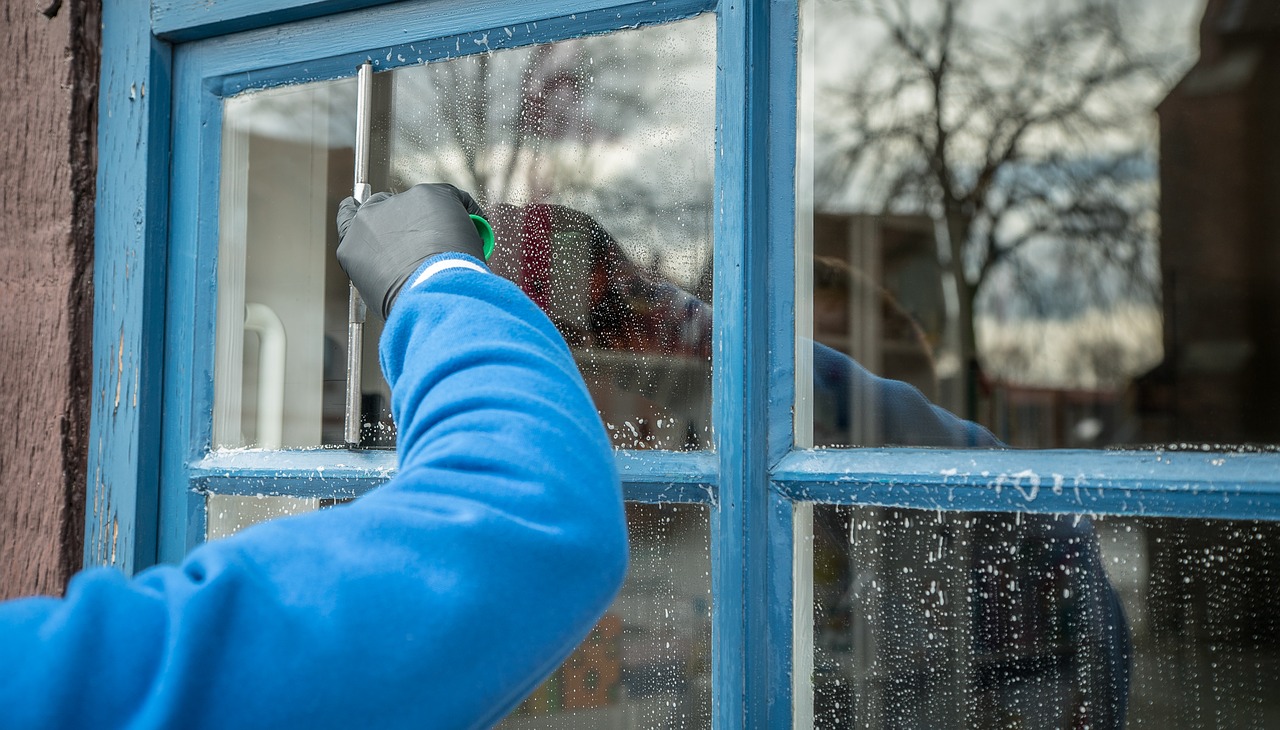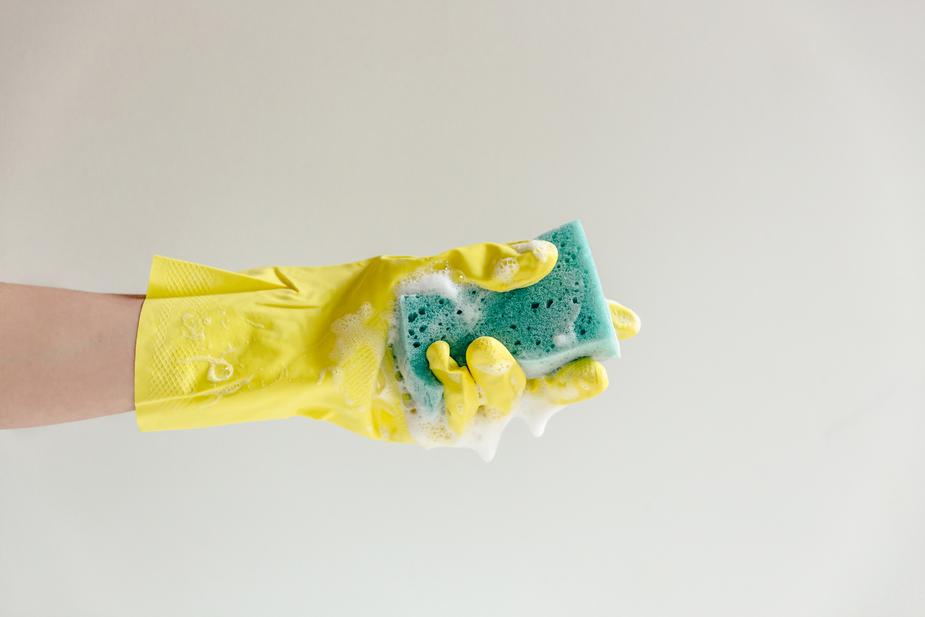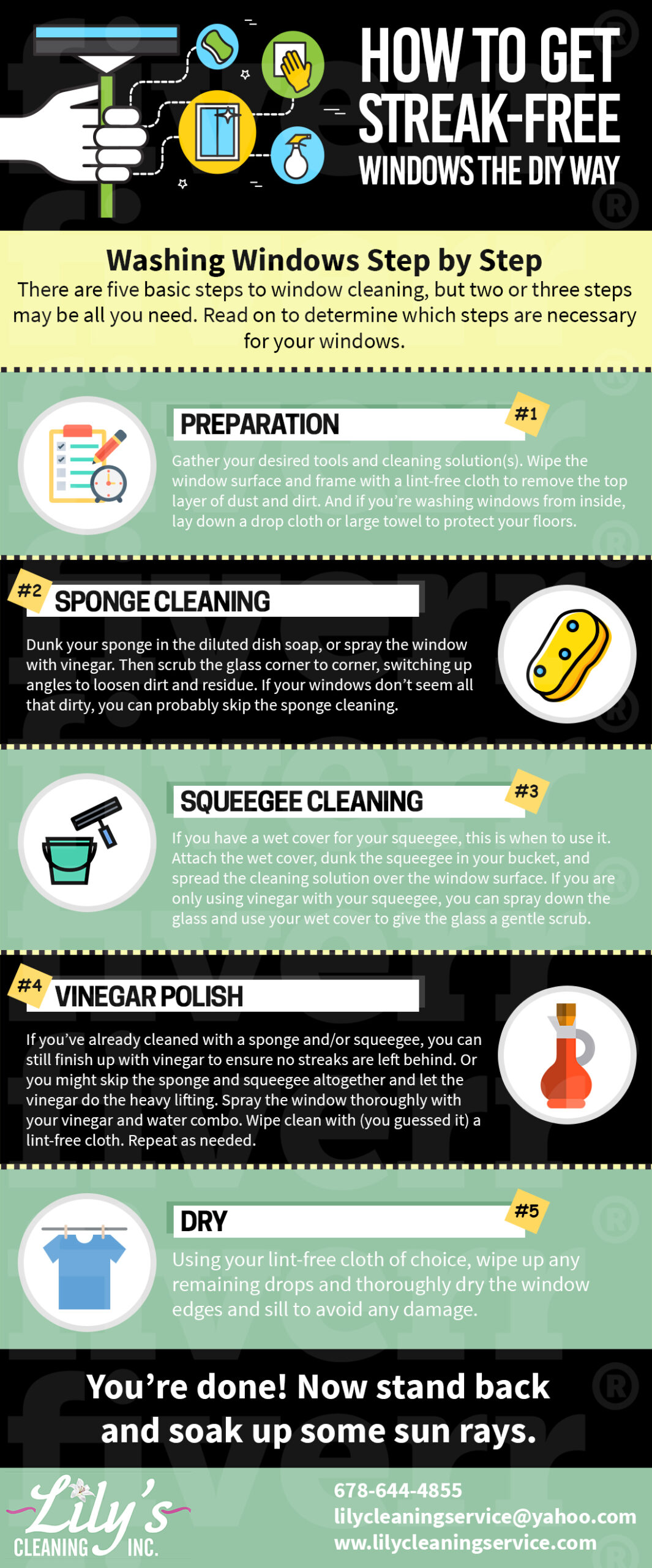Few things can transform a home like spotless windows that let the sunlight pour in. Ideally, we’d all wash our windows two or three times a year, but the chore can feel daunting if you don’t know the best method. Scrubbing and wiping at windows only to see stubborn dirt, mineral build-up, and streaks left behind is a frustrating experience.
We’ll show you how to combine ordinary household products with the most effective tools to easily do it yourself — no streaks in sight. Get ready for sunnier days ahead!

Clean Windows Start with the Right Tools
The first mistake many DIY window cleaners make is using improper tools (or misusing the proper ones). An ordinary washcloth, for example, will just push dust and lint around. And an old, nicked squeegee blade will create uneven results.
You have options when it comes to window cleaning tools, and a little trial and error is sometimes needed to find what works best for you. Here’s what we recommend:
- A good squeegee: It can take a little practice to get the hang of it, but nothing beats a quality squeegee for quick, effective cleaning.
- Extra squeegee blades: Your squeegee is only as effective as its rubber blade. A sharp, new blade is key to a streak-free finish. You can flip an old blade to use the other side, and it’s a good idea to keep a couple extra blades on hand.
- A squeegee wet cover: If you don’t purchase one new, you can simply rubber band a cloth to the squeegee blade.
- Sponge or scrubber: Windows scrubbers, which are often made of microfiber and are also made to fit over a squeegee blade, are worth the investment if you have many large panes of glass. Otherwise, a good sponge will do the trick.
- Lint-free cloths or towels: Paper towels, microfiber cloths, old cloth diapers, linen napkins, and yes, even the black and white pages of a newspaper can work. You can use these to wipe up any drips left behind by the squeegee or to fully dry small windows if you’re squeegee-less.

Ditch Toxic Chemicals for Cheap, Natural Alternatives
Now that you have your tools in place, the hardest part is done. Next, choose from two ultra simple cleaning solutions you can whip up right in your kitchen. Both options are better than toxic commercial window cleaning products.
- Dish soap & water. That’s right, many pros recommend a tiny squirt of dish soap in a bucket of water. Using a very small amount of soap is key — we’re talking 2 or 3 drops per gallon — because you don’t want it to become too sudsy.
- Vinegar & water. Acidic vinegar is great for cutting through grime and leaving a streak-free surface. Simply mix one part white vinegar to two parts water in a spray bottle.
Dish soap is recommended for dirtier windows, but the vinegar may be all you need for regular window cleaning. Some folks get the best results by using both! Wash first with soap, then follow up with vinegar, or add a drop of dish soap to your vinegar solution.
Washing Windows Step by Step
There are five basic steps to window cleaning, but two or three steps may be all you need. Read on to determine which steps are necessary for your windows.
Step 1: Preparation
Gather your desired tools and cleaning solution(s). Wipe the window surface and frame with a lint-free cloth to remove the top layer of dust and dirt. And if you’re washing windows from inside, lay down a drop cloth or large towel to protect your floors.
Pro Tip: If you’re using a squeegee, make sure your bucket is wide enough to dunk the squeegee blade.

Step 2: Sponge Cleaning
Dunk your sponge in the diluted dish soap, or spray the window with vinegar. Then scrub the glass corner to corner, switching up angles to loosen dirt and residue. If your windows don’t seem all that dirty, you can probably skip the sponge cleaning.
Step 3: Squeegee Cleaning
If you have a wet cover for your squeegee, this is when to use it. Attach the wet cover, dunk the squeegee in your bucket, and spread the cleaning solution over the window surface. If you are only using vinegar with your squeegee, you can spray down the glass and use your wet cover to give the glass a gentle scrub.
Remove the wet cover and draw the squeegee blade across the window, angling towards the bottom of the window and working from the top down. For the best results, swipe the squeegee in a Z pattern, overlapping each stroke. Between each swipe, dry the squeegee blade with a lint-free cloth.
Not using a squeegee? Skip ahead.
Step 4: Vinegar Polish
If you’ve already cleaned with a sponge and/or squeegee, you can still finish up with vinegar to ensure no streaks are left behind. Or you might skip the sponge and squeegee altogether and let the vinegar do the heavy lifting.
Spray the window thoroughly with your vinegar and water combo. Wipe clean with (you guessed it) a lint-free cloth. Repeat as needed.
Step 5: Dry
Using your lint-free cloth of choice, wipe up any remaining drops and thoroughly dry the window edges and sill to avoid any damage.
You’re done! Now stand back and soak up some sun rays.

Bonus Tips for Hard-to-Clean Windows
Paint specks, stickers, and stubborn stains don’t have to stand between you and the spotless windows of your dreams.
Stubborn dirt, stains, bird droppings, and tree sap: Soak with vinegar and water for several minutes. If that’s doesn’t do the trick, try scrubbing with a sponge or adding a splash of ammonia to
your cleaning solution. If you use an abrasive sponge, be sure to test on a small area first to see if it will scratch the glass.
Stickers and paint: Flecks of paint and old adhesive can be scraped off with a razor blade. Make sure the blade is sharp, then wet the window and scrape, rinsing the blade as you go. A credit card will often be good enough if you don’t want to risk using a blade. You can also smear mayonnaise over stickers and tape to dissolve the adhesive.
Mineral deposits: Mineral build-up from water runoff may also respond to soaking in vinegar. Alternatively, you can make a baking soda paste and scrub the build-up with a sponge, or with super fine steel wool. Again, test any abrasive materials before using and proceed with caution.

Let There Be Light!
If you have numerous windows, extra large window panes, or if you need a ladder to clean them, it is best to call for professional help. Our highly trained and experienced cleaning team will use the most effective tools and techniques for the job.
We know how to clean antique windows and specialty glass, and remove years of grime, quickly and safely. Want spotless windows in time for spring? Reach out today to for a free quote.

